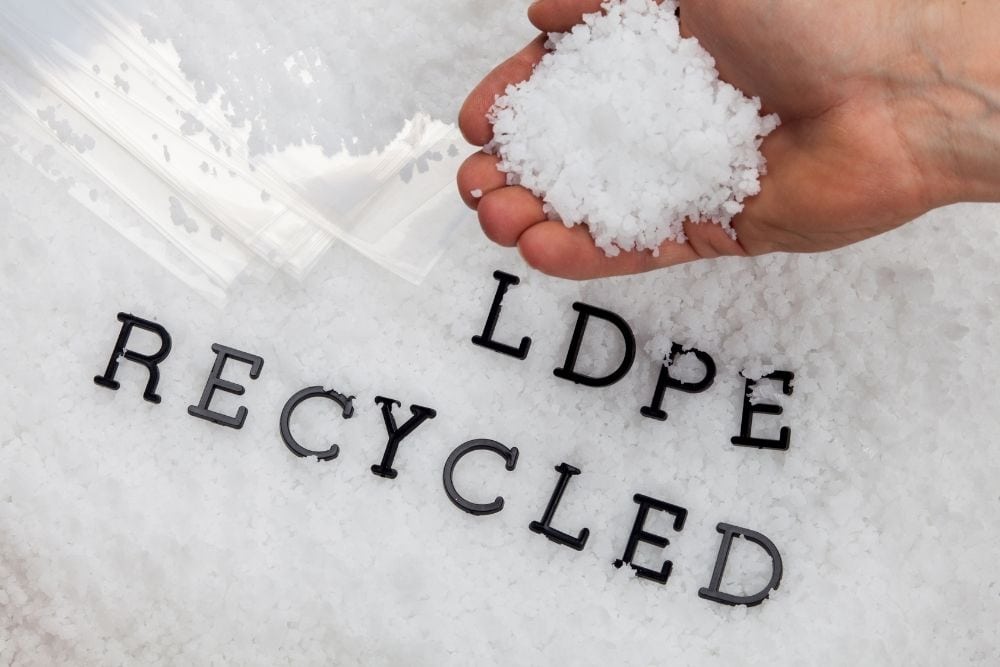Essential oils are incredibly concentrated – which is why they are so great. Better sleep, less stress, and improved well-being are all potential benefits of using these potent plant oils.
The average essential oil is fifty to one hundred times more potent than the plant it’s been made from!
But with great power comes great responsibility, including deciding how to store your oils safely.
There are a few benefits to using plastic to store essential oils.
They are lighter, cheaper, and won’t break if dropped.
But not all plastic is created equally, so learning about the types of plastic safe for essential oils is an important first step.
Contents
The Best Types of Plastics
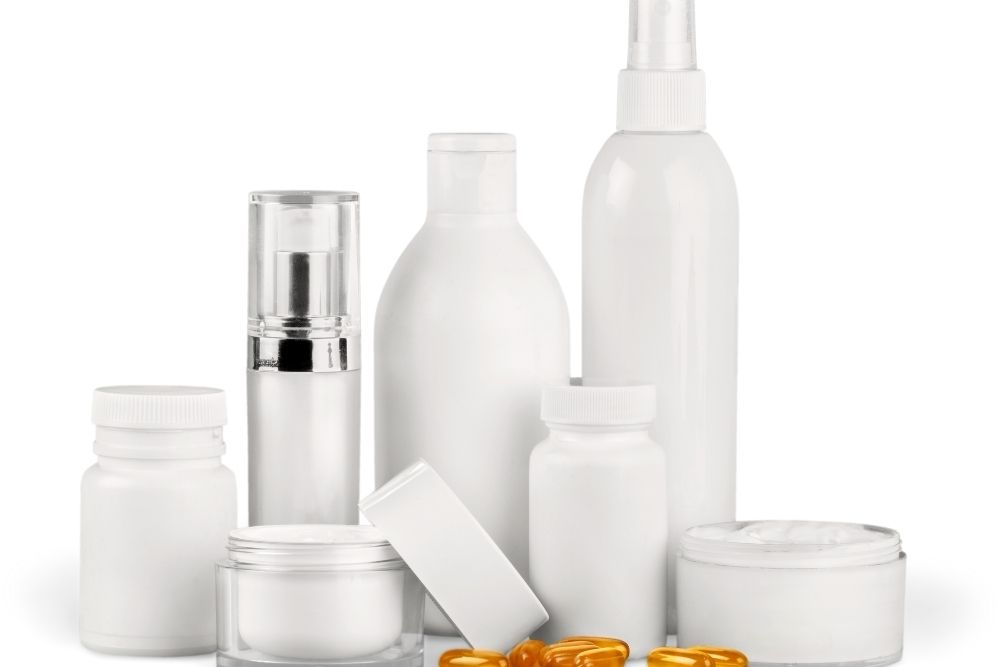
First of all, not all plastics are safe for essential oils. In fact, most plastics break down relatively easily and should be avoided completely when using essential oils.
All oils need to be diluted if stored in plastic, so please read more on this further down after figuring out which type of plastic will suit your needs.
Two types of plastic are best to use with essential oils: HDPE or PET(E).
Both of these plastics are incredibly sturdy and are commonly used in the beauty and food industries.
HDPE Plastic
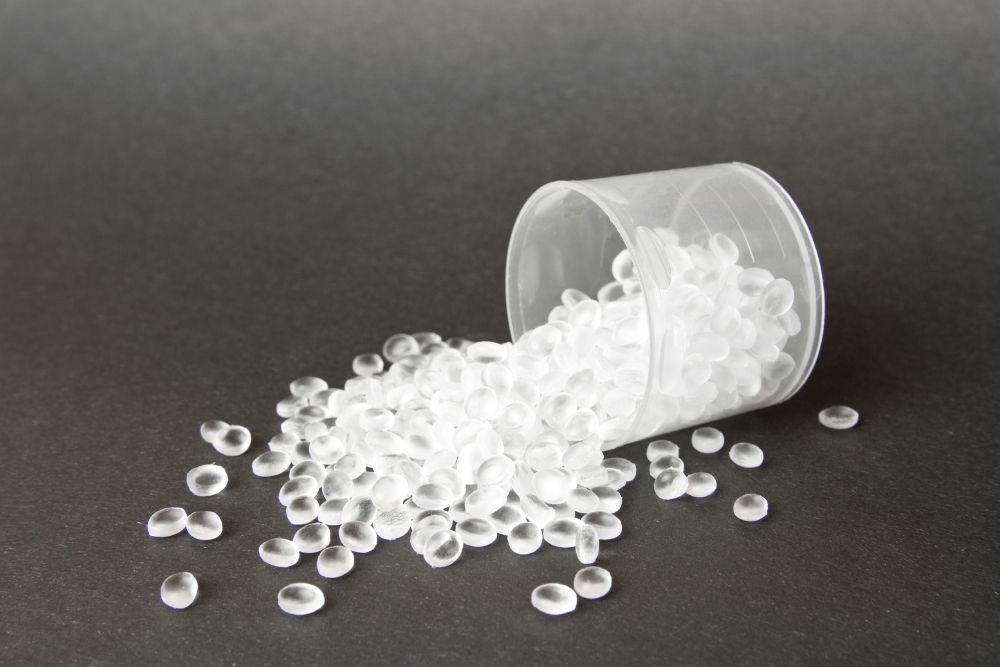
High-density polyethylene plastic, also known as HDPE, is a very strong and dense type of plastic. HDPE is made up of stronger bonds and longer chains than typical plastic, making it safer to use for essential oils, which have a tendency to break down their container if not stored properly.
HDPE is called Plastic #2, and is generally labeled accordingly by manufacturers. So, if you’re trying to find out if a bottle is made of HDPE, look for the number two (#2) printed on the bottom of the container.
Going into your bathroom or laundry room, you will probably find that all your shampoo and detergent soap bottles are made from HDPE plastic. Look and see if you can find #2 at the bottom.
This HDPE Wide Mouth Brown Plastic Bottle Pack is a great HDPE plastic option. Just make sure to have your dropper on hand!
PET Plastic
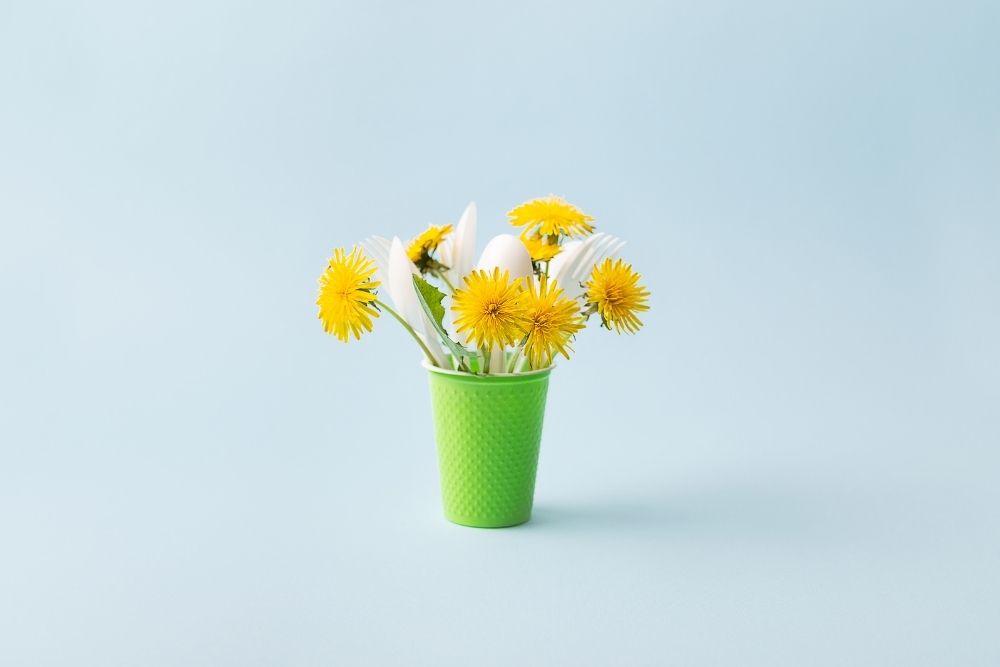
PET (or PETE) plastic, also known as polyethylene terephthalate, is another decent plastic option for storing essential oils. However, unlike HDPE, it is typically made for single-use only, which does suggest it is not as durable as HDPE.
There should be a number one (#1) on the bottom of a container if it is made from PET plastic. It is always important to be sure of what kind of plastic you are putting your strong oils in!
Most soda and water bottles will be made out of PET plastic. Once again, we encourage you to look for the #1 label so you get used to finding out what plastic you are working with.
Although HDPE is labeled as ‘Plastic #2’, it is the #1 choice when looking for safe plastics to store essential oils in. It is more durable and is less likely to break down or leak.
Just like when using amber or cobalt glass bottles, all plastic containers MUST be tinted or ideally, completely dark if being used for essential oils. The last thing you want is to have spent all that time looking for the right type of plastic for your oils only to spoil everything by exposing them to direct sunlight.
These safe plastic containers should also be stored in a cool dark place. It’s a good idea to store all of your oils in the same place so you can keep track of the storage conditions and any possible leaks.
These 4oz Black PET Plastic Bottles from Amazon are a great option. Dark plastic means your oils will be safe from the damaging sun.
Other Plastics for Essential Oils
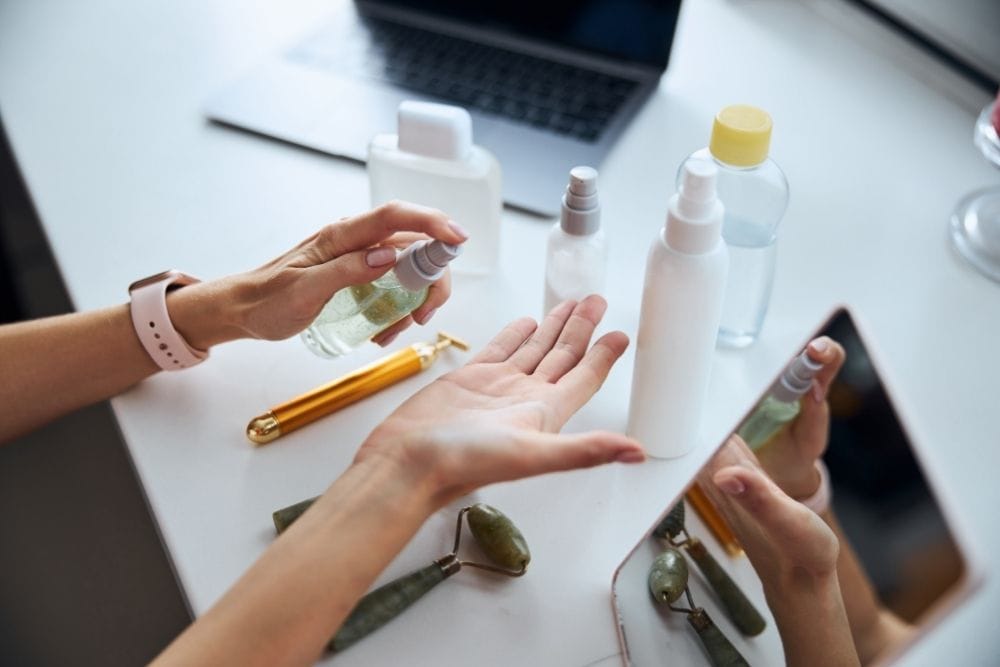
While HDPE and PET plastics are certainly your best options, LDPE and PP are also suitable plastics depending on how you intend to store your oils.
Both of these plastics are also used commonly around the house and can work well with essential oils. However, it would help if you still used dark plastics, so you do not ruin your oils.
LDPE, also known as low-density polyethylene plastic, is a waterproof, chemically resistant plastic material.
Although LDPE is also a durable plastic, because it is not nearly as dense as HDPE, it is significantly lighter, upping its convenience factor, especially when traveling.
You can find LDPE in a wide range of household items. From your garbage bags and trash cans, to your shipping envelopes and furniture!
PP Plastic

Polypropylene Plastic, shorted to PP, is a tough, fatigue resistance material. It is also chemically resistant, so acids and bleaches can’t eat through it.
You can find PP plastic in shampoo caps, opaque to-go containers, trays and even some toys!
The biggest (and most important!) difference between using HDPE and PET versus LDPE and PP is how diluted your essential oil has to be before pouring it into your container.
Wrong diluting ratios can lead to melted plastic- especially if you use slightly weaker plastics like LDPE or PP.
Diluting Your Oils in Plastic (Important!)
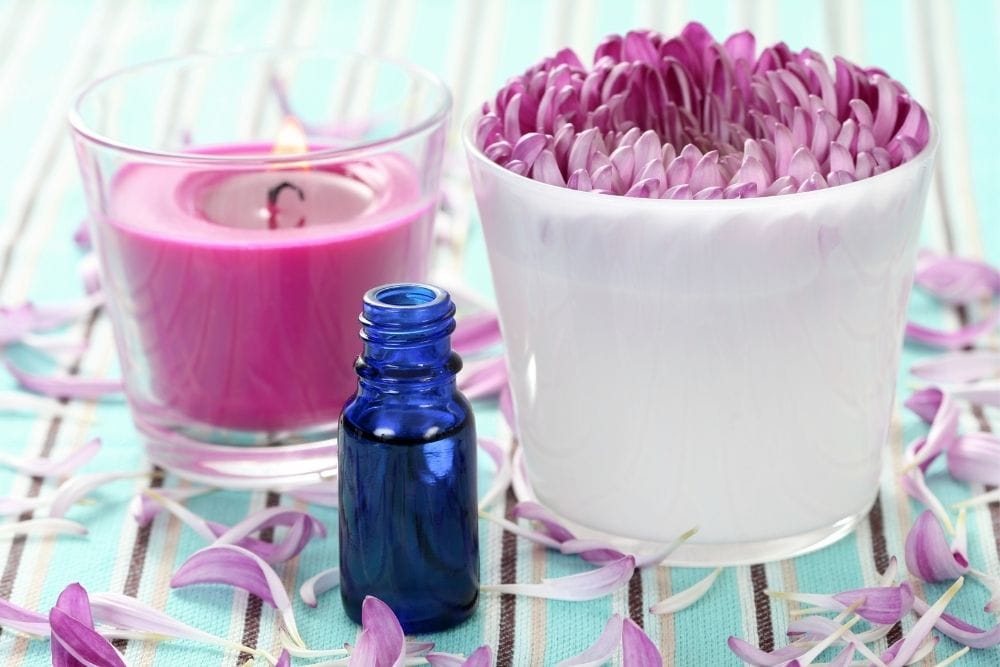
It is always important to dilute your oils if you store them in plastic. There is a high risk that an undiluted oil will break down its plastic container by melting it from the inside out.
Good carrier oil options are coconut oil, almond oil, vegetable oil and argan oil.
Both HDPE and PET plastics should not hold a ratio higher than 5% ratio of essential oil to carrier oil. That is approximately 85 drops of essential oils to 100 milliliters of carrier oil.
To save yourself some time, remember that your standard 5 milliliter essential oils bottle contained about 85 drops.
LDPE and PP plastics can only handle a 2% ratio of essential oil to carrier oil. This means about 34 drops of essential oil to 100 milliliters of carrier oil.
A diluted oil is always safer than an undiluted one. Ultimately, if you chose to keep oils undiluted, they should be kept in a dark glass container with the lid tightly screwed on.
Types of Essential Oils That Can’t Be Stored in Plastic
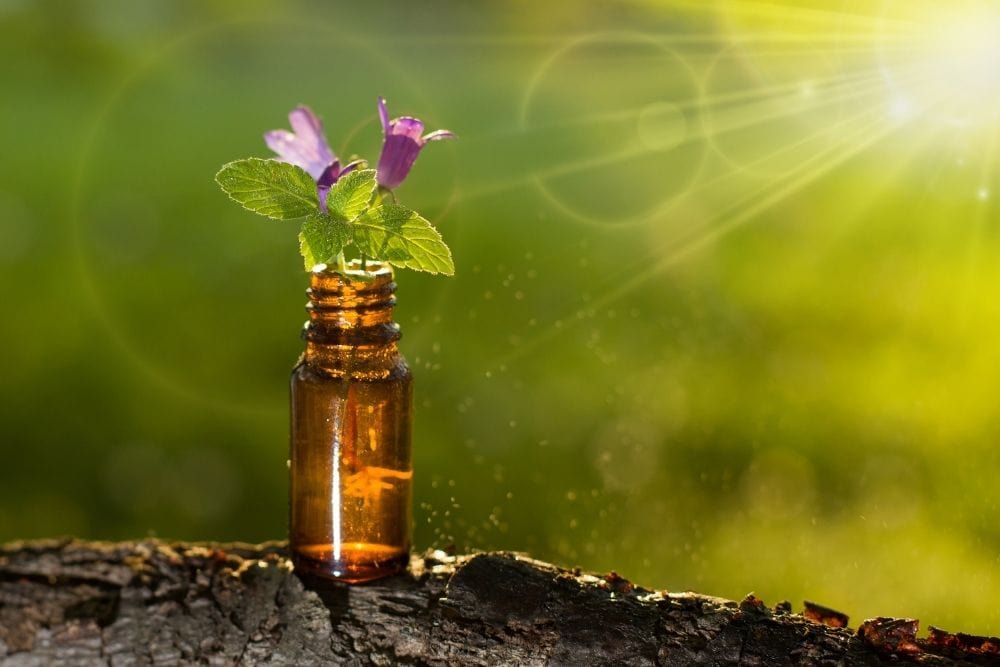
Some types of oils shouldn’t go in plastic at all, even if they are mixed with a carrier oil. A citrus oil, like lemon or grapefruit, is an example of an oil that should always be in glass.
Tea tree oil is another essential oil that can absolutely NOT go in plastic!
If you store tea tree oil in plastic, the plastic (PET, HDPE, or any other kind) will absorb an important compound out of the oil.
By taking away this compound, the tea tree oil will turn rancid and you will have lost a perfectly good essential oil and the container you chose to store it in.
It is also important to note that whether you are storing a tea tree oil, a sandalwood oil or a lemon oil, your container must be airtight!
Your oils will evaporate and leave you with significantly less oil than you started.
Silicone for Essential Oils
Although not technically a plastic, silicone is a lightweight and easily accessible alternative method to storing essential oils. Like glass, silicone is not known to react with essential oils.
In fact, silicone is actually better than plastic because, unlike plastic, it is not made to break down. Both glass and silicone are manufactured to be used countless times before having to replace them (if at all).
What’s great about silicone is that it is lightweight and easy to find- like plastic!
However, there have been some anecdotal accounts of essential oils breaking down silicone. So remember to keep your oils diluted whenever not using glass.
It’s always better to be safe than sorry!
Please also ensure that your silicone container is airtight. Because a lot of silicone containers are very flexible, it might be easier for the cap to come undone and for your oils to either spill or evaporate.
Amber Glass Bottles

After getting into the types of safe plastics for oils, it is important to acknowledge why amber glass is the gold standard for essential oil storage.
If you walk into a health food store or into an aromatherapy shop, you will probably see shelves lined with rows of cute little amber glass bottles filled with powerful essential oils. This consistency in packaging is not just for aesthetics, correct storage is mandatory when bottling essential oils.
Oils can oxidize, break down and lose their benefits if not stored properly. Amber (or cobalt) glass helps protect oils from the sunlight, which can be harmful to an oils shelf life.
Sunlight, high temperatures and the type of glass (or plastic, we’ll get to that soon!) can all promote the premature deterioration of an essential oil. Aluminum-lined bottles have also been said to work well, although they are not as commonly used.
Ideally, an amber or cobalt bottle should be used to store any essential oil, and the bottle itself should be kept in a dark, cool place- like in a cupboard or even in your refrigerator.
Conclusion
In conclusion, if you use plastic to store your essential oils, HDPE or PET plastic is the way to go. Remember, HDPE plastic is labeled as Plastic #2 on containers and PET(E) plastic is labeled as Plastic #1.
LDPE and PP plastic are good options but can only carry significantly more diluted oils.
If you have to use plastic, and if you have access to several types of it, always go with HDPE as it is ultimately your most durable option. The container also always has to be dark!
Remember, diluting your oils with carrier oil is always important if you use plastic, so reference the diluting rules beforehand. You will ruin your oils and your container if you don’t do this!
If you are going to use a plastic vessel, remember the golden rule: never store tea tree oil in plastic! It will be ruined!
Silicone is also a good way to store diluted oils. Although, there is not as much research on the effects of essential oils being stored in them.
Unsurprisingly, amber or cobalt glass is always the ideal (and easiest) method of storing essential oil. You don’t need to worry about carrier oils or to check to see if the container is dark enough.
Having fun looking for the right container for your oils! And good luck!

I currently work as a medical receptionist, but my ultimate goal is to work as an occupational therapy assistant. Helping others achieve a better quality of life is something I’m after. That’s one of the main reasons I started this blog. Learn more about me.

